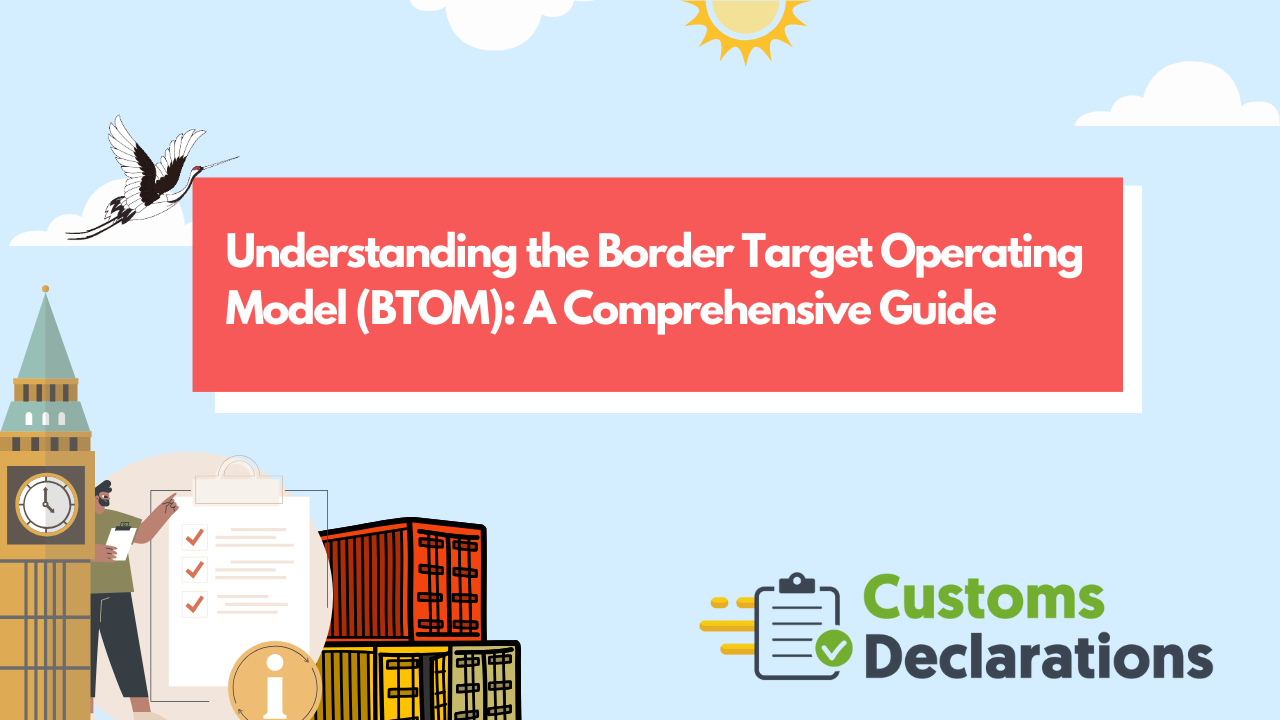The United Kingdom’s Border Target Operating Model (BTOM) is a strategic framework introduced to enhance the management of goods crossing UK borders. It emphasizes security, compliance, and efficiency in trade operations, adopting a risk-based approach to categorize imports from both European Union (EU) and non-EU countries. This categorization determines the specific documentation and compliance measures required for each type of import.
Risk Categorization for Imports
BTOM classifies imports into three primary risk categories based on factors such as the nature of the goods, their country of origin, and the compliance history of the importer:
- High-Risk Goods: These are items that pose significant safety, security, or health risks, such as live animals, certain animal products, and specific plant products. Imports in this category are subject to stringent checks and comprehensive documentation requirements.
- Medium-Risk Goods: These include products that require a moderate level of scrutiny, such as certain food items and plant products not classified as high risk. They undergo routine checks and standard documentation procedures.
- Low-Risk Goods: Items considered to have minimal risk, often including non-perishable goods and products with a history of compliance. These imports benefit from expedited processes and reduced documentation requirements.
The categorization is detailed in official UK government publications, providing importers with guidance on the specific requirements for each category.
Documentation Requirements
The documentation required for imports under BTOM varies according to the assigned risk category:
High-Risk Goods:
- Full Import Declaration: Detailed information about the goods, including value, classification, and origin.
- Safety and Security Declarations (ENS): Mandatory to ensure the goods do not pose threats.
- Health Certificates: Such as export health certificates for animal products and phytosanitary certificates for plant products, issued by the competent authority in the country of export.
- Pre-Notification via IPAFFS: Importers must notify authorities before the goods arrive in Great Britain using the Import of Products, Animals, Food, and Feed System (IPAFFS).
Medium-Risk Goods:
- Standard Import Declaration: Essential details about the shipment.
- Safety and Security Declarations (ENS): Required but may involve less scrutiny compared to high-risk goods.
- Health Certificates: As applicable, depending on the specific goods.
- Pre-Notification via IPAFFS: Required for certain goods.
Low-Risk Goods:
- Simplified Declaration: Basic information sufficient for clearance.
- Safety and Security Declarations (ENS): May be waived or simplified.
- Commercial Documentation: Such as invoices and packing lists.
It’s important to note that from 31 January 2025, all goods imported from the EU to Great Britain must be covered by a safety and security declaration (ENS).
Compliance Strategies for Importers
To navigate BTOM effectively, importers should consider the following strategies:
- Obtain an Economic Operator Registration and Identification (EORI) Number: This unique identifier is essential for all customs declarations in the UK.
- Classify Goods Accurately: Use the Harmonized System (HS) codes to determine the correct classification of goods, which affects duties and taxes.
- Maintain Comprehensive Records: Keep detailed documentation of all imports, including invoices, packing lists, and certificates, to ensure compliance and facilitate any audits.
- Stay Informed on Regulatory Changes: Regularly consult official sources to remain updated on any modifications to import regulations and procedures.
- Consider Professional Assistance: Engaging with customs brokers or freight forwarders can help ensure compliance and streamline the import process.
How Customs Declarations UK Platform Can Assist
The Customs Declarations UK Platform is designed to simplify the process of submitting customs declarations and Entry Summary Declarations (ENS) for importers:
- Integrated Declarations: The platform allows for the seamless submission of both import declarations and ENS, ensuring compliance with BTOM requirements.
- Automated Data Entry: By automating the input of necessary data, the platform reduces the risk of errors and speeds up the declaration process.
- Real-Time Compliance Checks: The system performs real-time checks against current regulations, alerting users to any potential compliance issues before submission.
- User-Friendly Interface: Designed for ease of use, the platform guides users through each step of the declaration process, making it accessible even for those new to import procedures.
- Comprehensive Support: Users have access to support resources and expert assistance to address any questions or challenges that may arise during the declaration process.
By utilizing the Customs Declarations UK Platform, importers can navigate the complexities of BTOM with greater ease and confidence, ensuring that all necessary declarations are completed accurately and efficiently.
Recent Developments
As of October 2024, the UK government has postponed the final stage of its post-Brexit border regime, extending the waiver on safety and security certificates for goods from the EU until 31 January 2025. This delay has been met with criticism from traders due to inadequate engagement and lack of clear guidance.
Conclusion
The BTOM represents a significant shift in the UK’s approach to border management, emphasizing risk-based assessments to enhance security and efficiency. Importers must understand the risk categorization of their goods and adhere to the required documentation and compliance standards. Leveraging tools like Customs Declarations UK can help streamline these processes, ensuring you stay ahead in a rapidly evolving trade environment.

